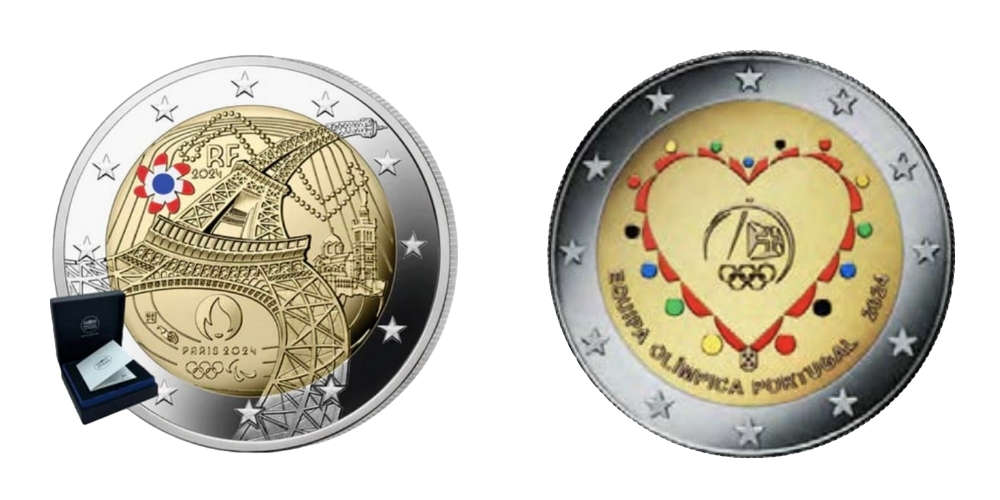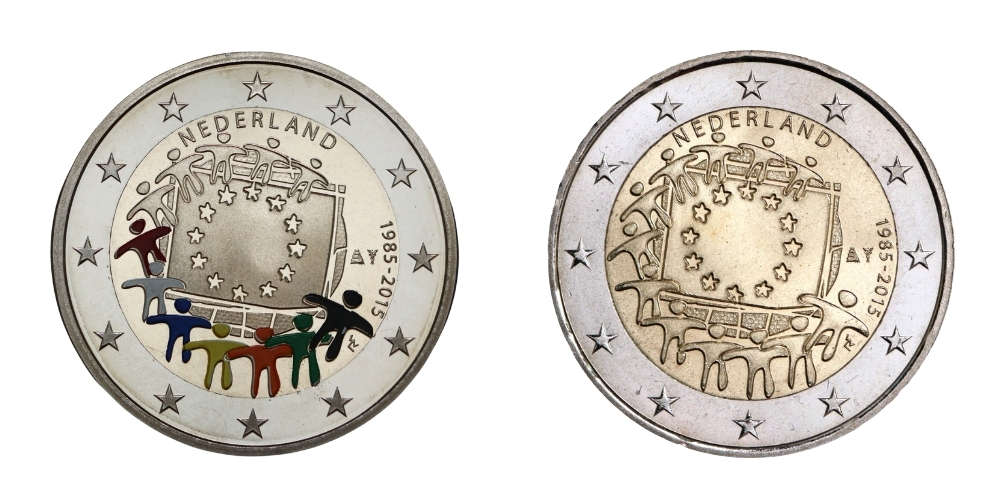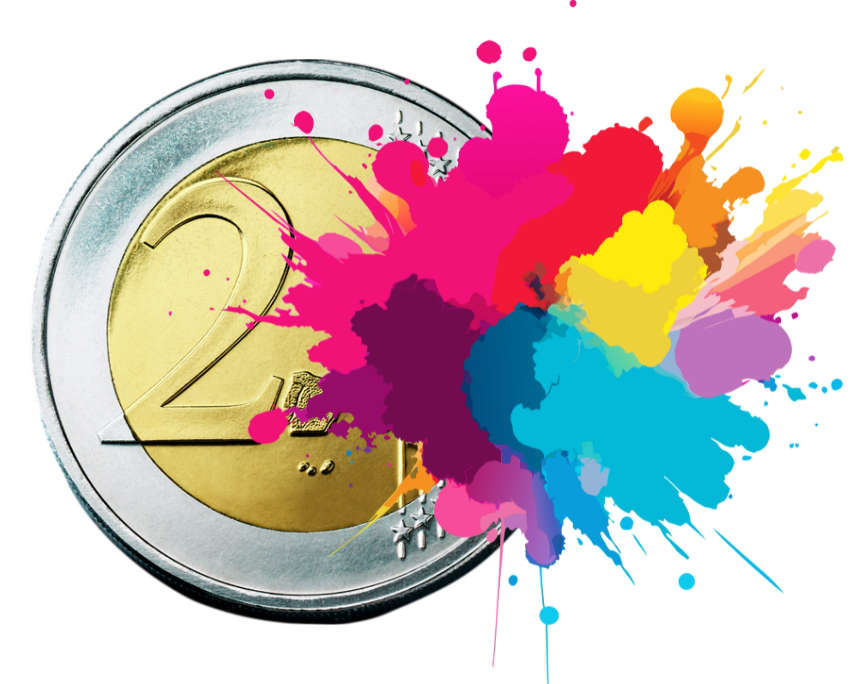Are Things Becoming Too Colourful? France and Portugal Issue 2-Euro Colour Coins
By Sebastian Wieschowski, translated by Anna Velten
Colour coins are a controversial topic within the numismatic world. While a large number of collectors love these colourful finishes, other numismatic experts consider it a taboo to change the coin image after the proper minting process – a view that is also held by the European Commission, which describes the process of applying colour to commemorative 2-euro coins as “damaging euro coins for artistic purposes”, and thus only tolerates these coins. For this reason, 2-euro commemorative coins with official colour applications are still an absolute exception to this today – now, however, six years after the last issue in 2018, two further exceptions are being added to the collection:
France’s second 2-euro commemorative coin of 2024 with a mintage figure of 20,000 specimens is dedicated to the topic “Olympic Games Paris 2024”/” The Olympic Torch”. It is struck in Proof quality and has a small flower symbol that shows the French national colours. And Portugal commemorates the Olympic Games with a 2-euro coin featuring a red heart and surrounding dots with colour application.

In 2024, France and Portugal use their Olympic Games commemorative coins to experiment with colour. Photos: Monnaie de Paris / Casa da Moeda.
The mere fact that new official 2-euro coins with colour application will be issued comes as a surprise to collectors. After all, the European Commission had already announced as early as 2010 that member states should not support “the damaging of euro coins for artistic purposes” – at best, it stated, colour coins would be tolerated. In fact, the EU´s specifications concerning circulation euro coins do not actually permit the use of colour. And as 2-euro commemorative coins are officially “circulation coins with commemorative character”, coloured circulation coins ought not to exist in theory – and coins which have been coloured by private individuals lose their status as an official means of payment.
Yet the EU has tolerated the colour experiments of the Netherlands and France so far as they are manufactured in small quantities and packed separately. Therefore, they are normally not used as a means of payment – and this cannot be expected to happen since the official 2-euro commemorative coins with colour application or colouring have a high collector´s value nowadays, enjoying a high reputation among euro coin collectors as an official variety of the issued coins.
Until 2024, there were only a few 2-euro commemorative coins that were officially coloured by a national minting authority after the actual minting process. In 2008, on the occasion of the EU Presidency of the Council, France provided its coin with a yellow wash. On behalf of the European Commission, the Monnaie de Paris manufactured this special edition with a mintage of 5,000 pieces. The coins were packed in numbered blisters and presented as a gift to employees of the European Union. Five years later, the Netherlands followed suit using a colour effect for their 2-euro coin “200 Years of the Kingdom”. The coin depicts both the contours of the six former kings of the Netherlands and the current incumbent King Willem-Alexander. On a total of 1,500 coins, which were produced in Proof quality, the ribbon depicting the contours of King Willem-Alexander was coloured orange. In 2014, France went one step further when issuing coins on the subject of the fight against AIDS: on each of the 10,000 coins of brilliant uncirculated and proof quality, the ribbon has a smooth surface and was coloured red. A special detail is that the minting beneath the red ribbon is plain. Normally, coins, which have been freshly issued by the bank, have a vertical pattern that consists of lines there.

In 2015, the Netherlands issued the joint euro coin of the EU flag in a coloured variety for collectors. Photos: Wieschowski.
In the past years, commemorative euro coins jointly issued by euro countries have also been occasionally coloured. In 2015, the Netherlands issued a collector’s set of the „EU flag” coin in proof quality, including three further coins in addition to the proof standard version. On one coin, the EU flag is coloured blue; the second depicts the figures surrounding the EU flag are alternately coloured blue and yellow; the third variant depicts seven figures respectively in red, white, blue, yellow, orange, green and black.
All previous official 2-euro coins with a colour application have two details in common: they have invariably shown a strong performance owing to their exotic status. Furthermore, they were not put in normal circulation, but manufactured either as a proof collector’s issue or issued in a coin card. That is probably why the European Commission will presumably continue to tolerate the issues and not step in. However, due to the fact that official colour coins continue to be an absolute exception for collectors, these new coins are expected to enjoy great popularity among collectors after so many years without colourful experiments.







